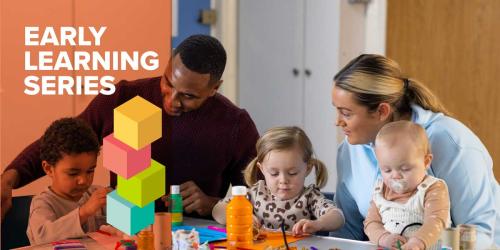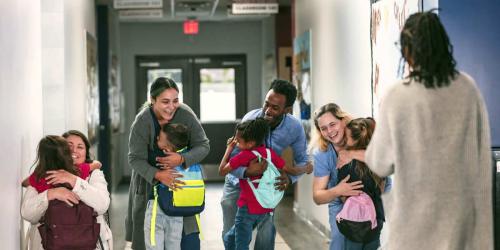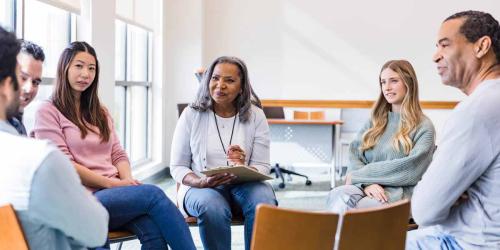Supporting Collect Impact Through a Developmental Relationship Approach

Schools alone can’t do everything when it comes to reaching out to underserved students and empowering them to succeed. Collective impact initiatives that focus on student success bring together schools, parents, youth-serving organizations, and other community partners to align their programs and efforts to better serve youth. It’s a collaborative approach that builds not only on the strengths of the individual partners but also their efforts as a whole.
Celeste Janssen, director of Institute for Youth Success, sees collective impact as an important tool for aligning youth-development organizations with the educational system. Her organization works with the Communities Supporting Youth initiative which guides collective impact work around the Portland area to improve the outcomes for underserved students. All Hands Raised serves as the backbone organization for the initiative.
Collective impact is inspiring new connections and new ideas all around the country. A developmental-relationship framework is a great way to incorporate the newest youth development research into community action plans.
According to Janssen, one important but often overlooked ingredient for success is “developmental relationships.” She points to a paper from the University of Pittsburgh suggesting that across every intervention, the active ingredient that makes a program successful is the degree to which it intentionally builds developmental relationships with clients. These relationships are characterized by a foundation of emotional attachment, frequent reciprocal engagement, progressive complexity, and the gradual shifting the balance of power from the provider to the client (or the adult to the youth).
Janssen says youth-development organizations, culturally specific programs, basic needs services and even schools do better when they work from a standpoint of relationship building. “Because collective impact integrates so many different fields, it is great opportunity for each distinct field to learn from each other, and to think about how to intentionally slow down and build in a developmental-relationship framework.”
A second “less jargony” framework that Janssen also cites comes from the Search Institute. Their research suggests youth are supported through different types of developmental relationships, where adults may specialize in offering a particular form of support, including:
- Express care (“Show that you like me and want the best for me”)
- Challenge growth (“Insist that I try to continuously improve”)
- Provide support (“Help me complete tasks and achieve goals”)
- Share power (“Hear my voice, and let me share in making decisions”)
- Expand possibilities (“Expand my horizons, and connect me to opportunities”)
As suggested earlier, these evidence-based conditions are keys to reaching and supporting underserved youth, and it’s what the Institute for Youth Success and likeminded youth-serving organizations can bring to the collective impact table.
“Collective impact is inspiring new connections and new ideas all around the country.” Janssen says.“A developmental-relationship framework is a great way to incorporate the newest youth development research into community action plans.”



